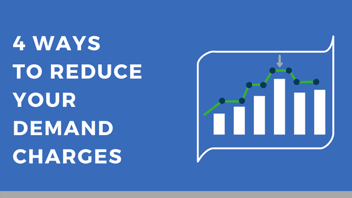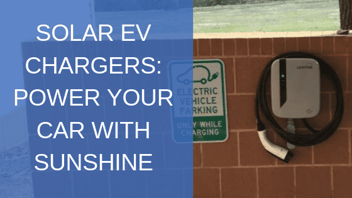Demand Charges with Solar Energy: How They Work and What You Can Do
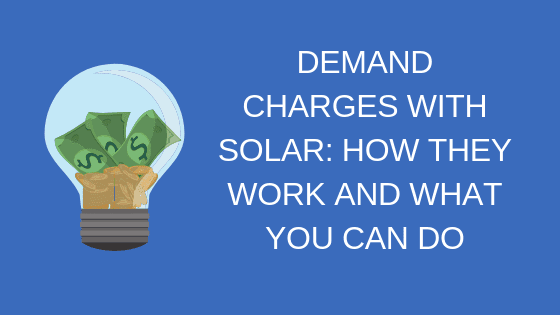
If you have a solar system or are thinking about installing a solar system, it’s important to understand what your electric bill will look like and how solar will impact it. Though solar panels produce free electricity for your business, farm, or home to use, you still might be seeing some charges from your utility, like demand charges. This blog will give you an idea of what demand charges are, how they’re calculated, and what it means for your solar savings.
What are Demand Charges?
Demand charges are typically levied on commercial and industrial customers, including agricultural producers. However, some residential customers also see demand charges as well. Put simply, a demand charge is the increased electric rate you pay for the power you use during a peak demand period.
What is a peak demand period? Here’s a simple example. Business 1 and Business 2 have the same computer and the same desk lamp. At Business 1, the employee turns on a 100 W computer and a 40 W desk lamp when he comes in, works for one hour, and turns both off.
At Business 2, the employee turns on the same computer for one hour, then turns the computer off. Then, she turns the same desk lamp on and works for another hour.
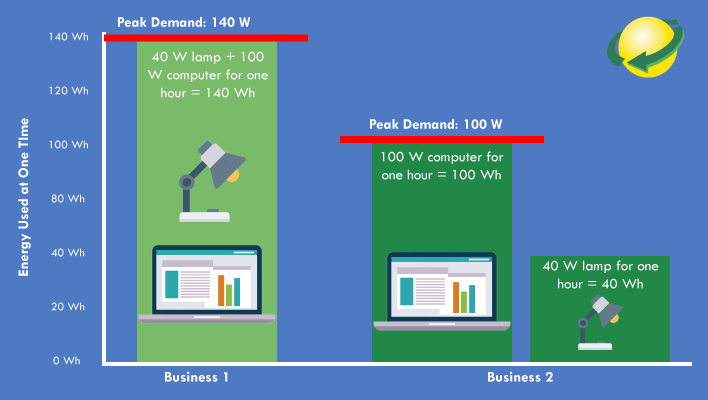
In both Business 1 and Business 2, the same laptop and desk lamp are both on for one hour, however, Business 1 will pay a higher electric rate.
Why is this? Demand charges.
Business 2’s max usage is 100 W - because she is using the computer and desk lamp at different times. Because Business 1 is using more electricity at one time (140 W for both the computer and lamp at the same time), he is creating more demand for the utility.
Utilities can’t store electricity for the most part - it must be generated on demand. So the utility needs to have facilities in place that can both produce and deliver enough power to serve the maximum amount their customers need. The utility has to work extra hard to meet this extra demand, so Business 1 pays a higher rate for electricity.
This equipment, even if it’s just on standby, is expensive to build and maintain, so demand costs are levied based on how much businesses might need. Business 1 is a more expensive customer, so they are charged a higher rate during their peak demand period.
How are Demand Charges Calculated?
Utility companies typically calculate your demand charges based on 15-minute increments of when you need the most power. They look at the previous month’s usage to determine when you’re using the most electricity and then multiply that by a pre-defined rate to calculate your demand charges.
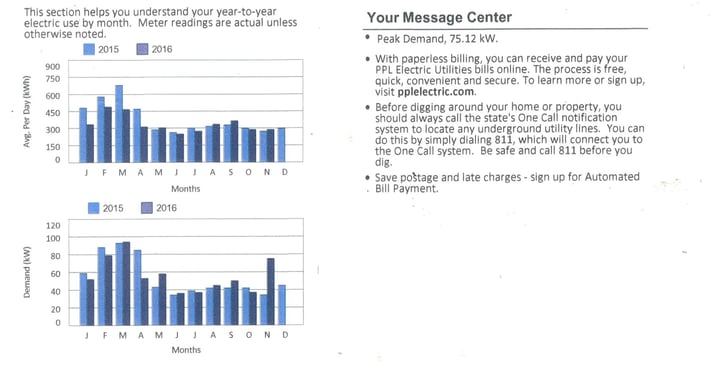 An example of an electric bill. The chart on the top shows the volume of kWhs used per day, and the chart below shows the peak demand for each month.
An example of an electric bill. The chart on the top shows the volume of kWhs used per day, and the chart below shows the peak demand for each month.Here’s another example: your utility company charges $10 per kilowatt per month for demand, and your peak 15-minute increment usage was 75 kilowatts. In this instance, you’ll be billed $750 in demand charges. This demand charge then gets tacked onto your customer charge, distribution charges, and your standard energy charge.
What Does This Mean if You Have a Solar System?
The amount that solar energy will help with demand charges depends on whether or not your peak demand lines up with your solar panels’ peak energy production. If you’ve installed solar panels, proper timing and a storage solution can help lower this significant portion of your electricity bill.
If you’re using equipment that requires a lot of electricity during the day while the sun is shining and your system is churning out those kilowatts, you’re lessening the amount of electricity you need to draw from the grid, thus lessening the amount of electricity you pay for at the high demand rate. But, unless your system is producing enough electricity to fulfill all the energy you use at peak demand, you’ll still pay some demand rate charges.
If you’re using a lot of electricity when your system isn’t producing, say before the sun comes up, after the sun goes down, or on a really rainy day, your system isn’t producing and you’re drawing all the electricity during your peak demand from the grid at those higher rates.
What does this mean for net metering? Net metering allows you to get the same value for every kilowatt-hour (kWh) produced, whether or not you use the energy when it’s produced. The excess electricity from your system gets uploaded to the grid, and you get credit for that electricity. Then, when you’re using electricity and your system isn’t producing, you can draw on those credits to power your business or home.
If you’re interested in cutting demand charges with solar, you may want to consider an energy storage solution. Investing in batteries to store the energy produced by your solar system allows you to use your free solar electricity during peak times, or whenever you have a spike in energy.
This wins out over net metering because you’re not drawing demand-charge-rated electricity from the grid, you’re pulling it off your battery, for free. Unless you drain your battery, you will be pulling less energy from the grid and your demand charges won’t be as high.
However, though energy storage solutions and batteries continue to become more affordable, they still require a substantial upfront investment and ongoing maintenance. The cost of energy storage for your solar system could very well be more than demand charge savings.
If you’re interested in reducing your demand charges with solar energy or just have some questions about how your solar system and demand charges work, send us a message or give us a call. One of our solar experts would be happy to help!


